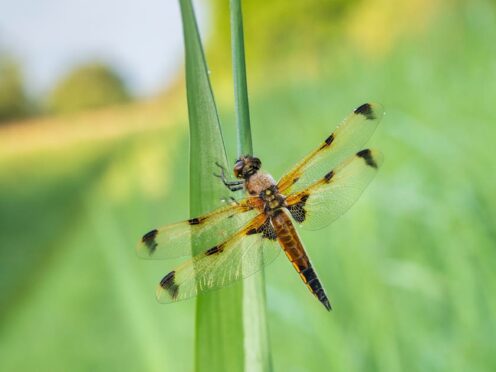A wetland nature reserve which has been cared for by the National Trust for 125 years is being declared a “dragonfly hotspot” because of its value to the ancient insects.
Wicken Fen national nature reserve in Cambridgeshire – one of the last remnants of undrained fenland in East Anglia – is being designated the UK’s newest dragonfly hotspot by the British Dragonfly Society.
The designation, one of just 23 in the country, recognises the reserve’s abundance of wetland habitats including ponds and watercourses which the insects need to complete the stages of their lifecycle, the variety of species and easy access visitors can have to see them.
The National Trust said 22 of the UK’s 57 species of dragonfly and damselflies, ancient winged insects whose ancestors predate the dinosaurs, had been spotted at Wicken Fen, including the rare Norfolk hawker.

Reserves such as Wicken Fen, which marked 125 years of being cared for by the charity in May, are key to the insects’ survival as they are increasingly being displaced from their usual habitats further south and on the continent by climate change, the trust said.
These include species such as the emperor dragonfly, which is now found at Wicken Fen after starting to spread northward about 20 years ago.
Dave Stanforth, programming and partnerships officer for the National Trust at Wicken Fen, said the insects needed water in all stages of their lifecycle, laying eggs in water or at the water’s edge, developing as larvae underwater, and hunting over or near water in their few weeks as adults.
“With its plethora of ponds and watercourses, this means that Wicken Fen is an ideal place for them,” he said.
He said work undertaken by the team at Wicken Fen had created a mix of open water, young and mature vegetation, which provided the “optimal habitat” for dragonflies and damselflies.

“In particular it is the ‘dragonfly bay’ areas of open grass alongside the water which have provided these insects – which are nature’s most successful stalkers – to have great places to perch, but they also allow visitors to get fantastic up-close experiences of these beautiful creatures,” he said.
Many of the measures that have contributed to the hotspot designation form part of the larger Wider Wicken Fen Vision, a 100-year project launched in 1999 that aims to create an even more diverse landscape for wildlife and people in the remaining stretch of fenland, the trust said.
Tim Coleshaw, chair of trustees for the British Dragonfly Society, said: “We are thrilled to be officially designating Wicken Fen as a dragonfly hotspot and continuing our partnership.
“We hope this new hotspot and their passionate staff and volunteer team will help inspire even more people to love these fantastic insects, and to get involved in monitoring and conserving them.”
